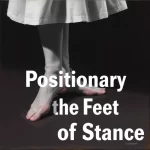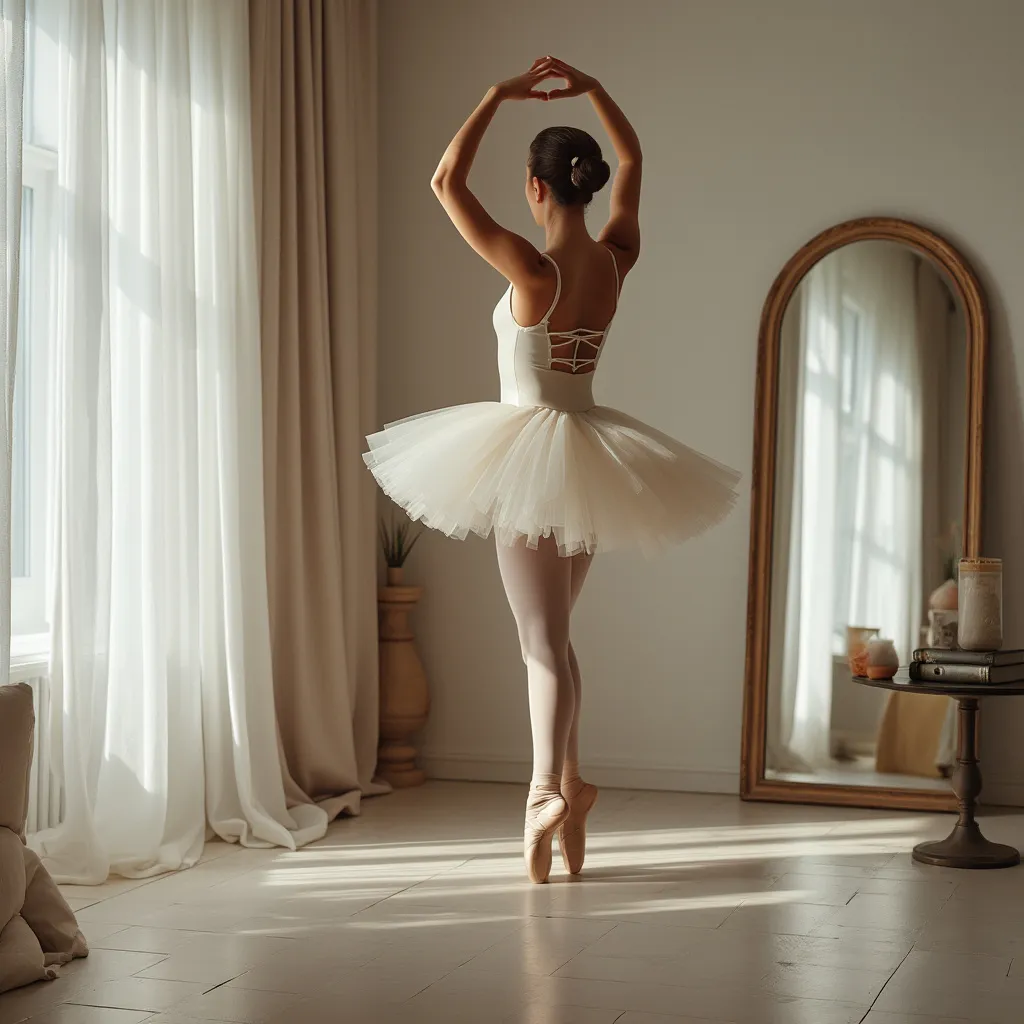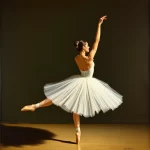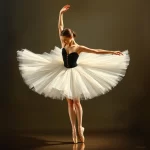Positions of the Feet: The Vocabulary of Stance

Introduction
The human body is a marvel of engineering, capable of a wide range of movements and postures. Among these, the positions of the feet play a crucial role in maintaining balance, executing movements, and expressing various forms of art, such as dance and martial arts. Understanding the vocabulary of stance is essential for athletes, dancers, and even those interested in improving their posture and balance. This article delves into the different positions of the feet, their significance, and how they are used in various disciplines.
The Importance of Foot Position
Foot positioning is fundamental to many activities, from everyday walking to complex dance routines and athletic performances. The way we position our feet can affect our balance, stability, and overall movement efficiency. Proper foot positioning can prevent injuries, enhance performance, and contribute to better posture.
Balance and Stability
One of the primary functions of foot positioning is to maintain balance and stability. The feet serve as the foundation for the body’s weight, and their position can influence how well we can stand, walk, or perform other activities. Proper foot positioning ensures that the body’s center of gravity is aligned, reducing the risk of falls and injuries.
Movement Efficiency
Efficient movement is another critical aspect influenced by foot positioning. Whether you’re running, dancing, or performing a martial arts move, the position of your feet can determine how smoothly and effectively you can execute the movement. Proper foot positioning can enhance agility, speed, and power.
Posture and Alignment
Foot positioning also plays a significant role in maintaining good posture and alignment. Incorrect foot positioning can lead to misalignment of the knees, hips, and spine, resulting in discomfort and potential long-term issues. Proper foot positioning helps distribute weight evenly and supports the body’s natural alignment.
Basic Positions of the Feet
There are several basic positions of the feet that are commonly used in various disciplines. These positions serve as the foundation for more complex movements and stances.
First Position
In the first position, the heels are together, and the toes are turned outwards, forming a straight line. This position is commonly used in ballet and serves as the starting point for many movements. It helps in maintaining balance and provides a stable base for other positions.
Second Position
The second position involves placing the feet shoulder-width apart with the toes turned outwards. This position is also common in ballet and other dance forms. It provides a broader base of support and allows for greater movement flexibility.
Third Position
In the third position, one foot is placed in front of the other, with the heel of the front foot touching the arch of the back foot. This position is less commonly used but serves as a transitional stance in dance and other activities.
Fourth Position
The fourth position involves placing one foot in front of the other, with a gap between them. Both feet are turned outwards, and the weight is evenly distributed. This position is used in ballet and other dance forms to prepare for jumps and other movements.
Fifth Position
In the fifth position, the feet are placed close together, with the heel of one foot touching the toe of the other foot. Both feet are turned outwards. This position is commonly used in ballet and serves as a starting point for many complex movements.
Foot Positions in Different Disciplines
Foot positioning is not limited to dance; it plays a crucial role in various disciplines, including martial arts, sports, and everyday activities. Each discipline has its unique set of foot positions that serve specific purposes.
Martial Arts
In martial arts, foot positioning is essential for balance, power, and agility. Different stances are used to execute various techniques and movements.
- Horse Stance: This stance involves placing the feet wider than shoulder-width apart, with the toes pointing forward. The knees are bent, and the weight is evenly distributed. This stance is used for stability and power generation.
- Front Stance: In this stance, one foot is placed forward, and the other foot is placed back, with the toes pointing forward. The front knee is bent, and the back leg is straight. This stance is used for forward movements and attacks.
- Cat Stance: This stance involves placing most of the weight on the back foot, with the front foot lightly touching the ground. The toes of the front foot are pointed forward. This stance is used for quick movements and evasions.
Sports
In sports, foot positioning is crucial for performance and injury prevention. Different sports require specific foot positions to optimize movement and stability.
- Running: Proper foot positioning in running involves landing on the midfoot or forefoot, with the toes pointing forward. This position helps in reducing impact and improving running efficiency.
- Basketball: In basketball, players often use a stance with feet shoulder-width apart and knees slightly bent. This position allows for quick movements and changes in direction.
- Soccer: In soccer, players use various foot positions depending on the action. For example, when dribbling, the toes are pointed forward, and the weight is on the balls of the feet for quick movements.
Everyday Activities
Foot positioning is also important in everyday activities, such as walking, standing, and lifting objects. Proper foot positioning can help prevent injuries and improve overall posture.
- Walking: When walking, the feet should be placed parallel to each other, with the toes pointing forward. The weight should be evenly distributed, and the heel should strike the ground first.
- Standing: When standing, the feet should be placed shoulder-width apart, with the weight evenly distributed. The toes should point forward, and the knees should be slightly bent.
- Lifting Objects: When lifting objects, the feet should be placed shoulder-width apart, with the toes pointing forward. The knees should be bent, and the back should be straight to prevent injuries.
Common Mistakes and How to Avoid Them
Improper foot positioning can lead to various issues, including injuries, poor performance, and discomfort. Here are some common mistakes and tips on how to avoid them.
Overpronation and Supination
Overpronation occurs when the foot rolls inward excessively, while supination occurs when the foot rolls outward excessively. Both conditions can lead to injuries and discomfort.
- Solution: Wearing proper footwear with adequate support can help correct overpronation and supination. Additionally, exercises to strengthen the foot muscles can improve foot positioning.
Incorrect Toe Alignment
Incorrect toe alignment, such as pointing the toes inward or outward excessively, can lead to misalignment of the knees, hips, and spine.
- Solution: Pay attention to toe alignment and ensure that the toes are pointing forward or slightly outward, depending on the activity. Practicing proper foot positioning can help correct this issue.
Uneven Weight Distribution
Uneven weight distribution, such as placing more weight on one foot or the balls of the feet, can lead to discomfort and poor posture.
- Solution: Focus on distributing weight evenly between both feet and across the entire foot. Practicing balance exercises can help improve weight distribution.
FAQ
What is the significance of foot positioning in dance?
Foot positioning is crucial in dance as it provides the foundation for balance, stability, and movement execution. Proper foot positioning ensures that dancers can perform movements smoothly and efficiently while reducing the risk of injuries.
How can I improve my foot positioning for better balance?
Improving foot positioning for better balance involves practicing balance exercises, such as standing on one foot or using a balance board. Additionally, paying attention to toe alignment and weight distribution can help improve balance.
What are some common foot positioning mistakes in sports?
Common foot positioning mistakes in sports include overpronation, supination, incorrect toe alignment, and uneven weight distribution. These mistakes can lead to injuries and poor performance.
How does foot positioning affect posture?
Foot positioning affects posture by influencing the alignment of the knees, hips, and spine. Proper foot positioning helps maintain good posture and prevents misalignment, which can lead to discomfort and long-term issues.
Can improper foot positioning lead to injuries?
Yes, improper foot positioning can lead to various injuries, including sprains, strains, and joint issues. Ensuring proper foot positioning can help prevent these injuries and improve overall movement efficiency.
Conclusion
The positions of the feet are fundamental to various activities, from dance and martial arts to everyday movements. Understanding the vocabulary of stance and practicing proper foot positioning can enhance balance, stability, movement efficiency, and posture. By paying attention to foot positioning and avoiding common mistakes, individuals can improve their performance and reduce the risk of injuries. Whether you’re an athlete, dancer, or someone looking to improve your posture, mastering the positions of the feet is a valuable skill that can benefit you in many ways.





